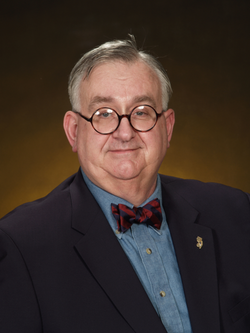Since our last commentary, we have been very busy. Steve Austin and a number of our associates spent time at the Fire Rescue International conference in Dallas. Our booth was a particularly busy area. Getting the word out about safe operations on the highways remains our number one priority. All of us here at Respondersafety.com continue to be amazed how many people have had close calls while operating out on the highways of our nation.
Before I go any further, on behalf of the Responder Safety Institute, I wish to express our apologies for the fact that our fulfillment house has not been sending your copies of the Highway Safety for Emergency Services video. I want you to know that this is something with which we are not at all happy. Steve has been working diligently to correct this matter, however, there is no definitive answer for you as to what is going wrong. I can only ask for your continued patience.
I want you to know that there are number of other places that you can turn to for help. Howard Cohen, our association attorney, has been diligently scanning the Internet for more places to visit. The following is the latest list that he has supplied to us.
- http://www.nymir.org/docs/NYMIR_Vol_6-No_2.pdf --this site contains an article on Traffic Hazards citing Respondersafety.com
- http://www.afdanews.org/newsletter.html --highway safety is touted at this site of the Arizona Fire District Association
- http://www.njfmba.org/Health_Safety/previoussafe/traffic_haz.html --referenced as a link in this story on Traffic Hazards by the New Jersey
- http://www.dem.state.az.us/azserc/Newsletter307.pdf --this is the newsletter of the AZ Emergency Response Commission
- http://www.ichiefs.org/onscene/archive/arc7-2002.shtml --Referenced as follows on IAFC site: "Also, we have seen an increase in fire fighter deaths and injuries at highway incidents. ResponderSafety.com is a fairly new initiative that is collecting the alarming statistics about these incidents, and it will scare you to see the number of close calls. In addition, ResponderSafety.com is developing educational programs to help inform and motivate fire fighters to protect themselves when operating on the highway. We must protect our people better on the highways. Vehicle placement is a critical component of fire fighter safety on the highways. Deployment of cones and other warning devices further back on the roadway is a vital aspect of protecting fire fighters. Be sure to look into this critical safety issue for the protection of your fire fighters."
- http://www.michiefs.org/pdf/Newsletter_MayJun2003.pdf --site of Michigan Chiefs Newsletter
- http://www.itspublicsafety.net/fire_hsvideo.htm --The ITS website
- http://elcajonfire.com/archives/000038.php --nice story on site of El Cajon FD "Slow Down Around Emergency Crews! While emergency crews work to save lives - they face dangerous conditions responding to, and, while on the scene of an incident.
http://www.cdc.gov/niosh/face200238.html
Volunteer Captain Killed, Two Fire Fighters and Police Officer Injured When Struck by Motor Vehicle at Highway Incident - Minnesota
Each of these links may be of assistance to you in gathering more information about highway safety issues. I want you to know that we are making progress in getting our message into other languages. Our Training Director, Jack Sullivan, has forwarded the following link to a Spanish language version of one of the NIOSH safety reports.
http://www.cdc.gov/spanish/niosh/docs/2001-143sp.html
Hazard ID 12: Traffic Hazards to Fire Fighters While Working Along Roadways
Members of the Institute have been very busy during the recent series of storms that struck the Mid-Atlantic and Northeastern sections of the United States. Perhaps the most interesting story to emerge from the storm duty comes from Steve Austin.
During the storms that preceded Hurricane Isabel his area of Delaware was struck by a series of torrential rainstorms that dumped more than a dozen inches of rain on New Castle County. More than 40 homes were declared as being unfit for further use. Steve told me that he was out on highway traffic control duty, serving as a fire policeman, when he saw something that he had never before seen in his 40 years in the fire service.
It was raining so hard that the flares which he had placed around his traffic control point were suddenly extinguished by the rain. Now that is some serious rain.
Until next time, please stay safe and try to do the right thing. The consequences of inattention to procedures can be deadly.


